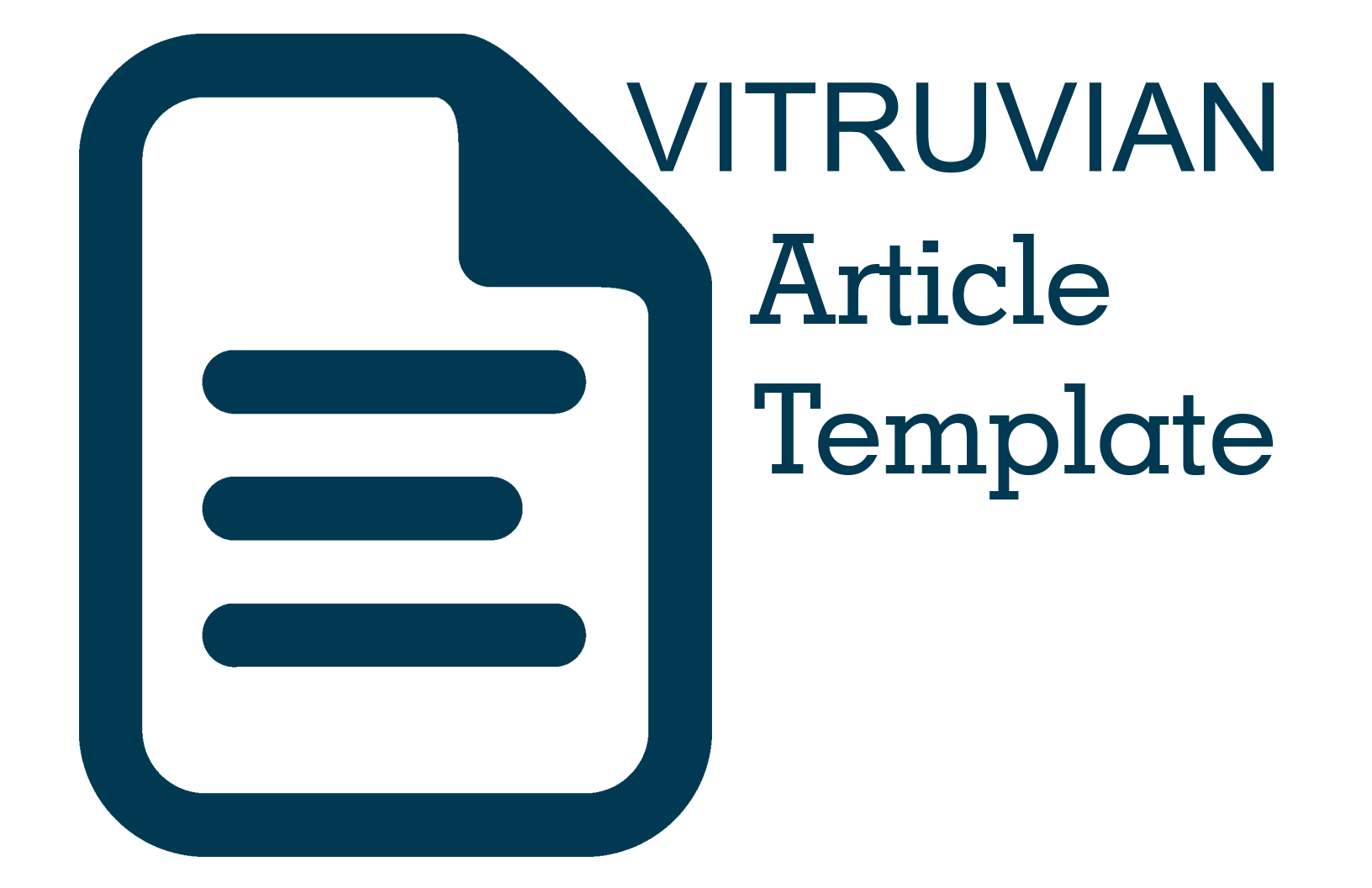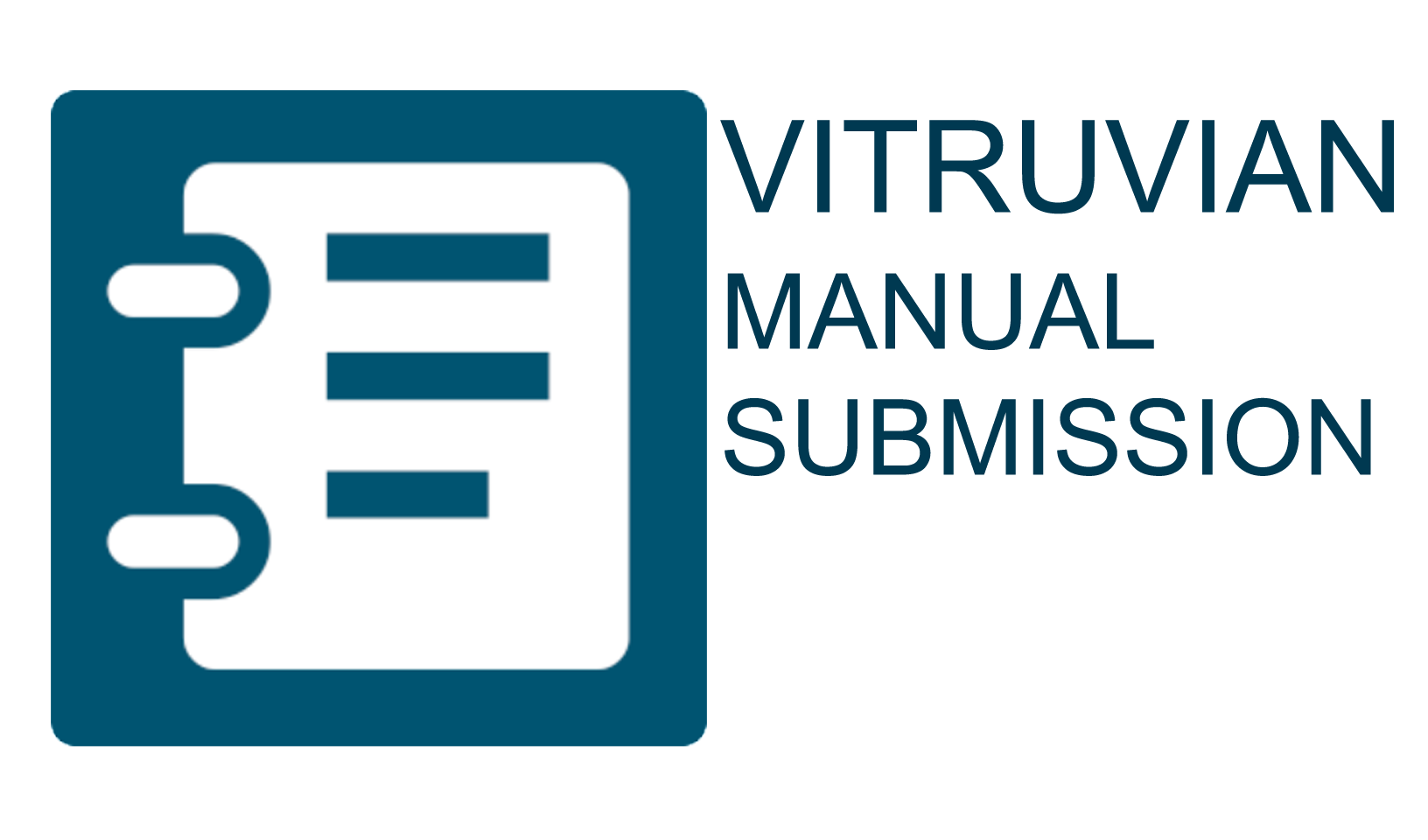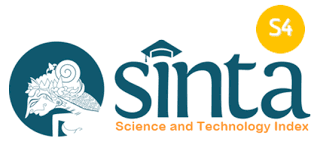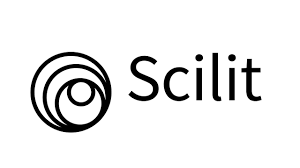- Focus and Scope
- Section Policies
- Peer Review Process
- Publication Frequency
- Open Access Policy
- Archiving
- Publication Ethics
- Scientific Journal Statement
- Anti-Plagiarism Policy
- Articles in Press
- Manuscript Policy
- Author Fees
Focus and Scope
The "Vitruvian : Jurnal Arsitektur, Bangunan, dan Lingkungan" is intended to be the journal for publishing articles reporting the results of research on architecture, building, and environment. The "Vitruvian : Jurnal Arsitektur, Bangunan, dan Lingkungan" invites manuscripts in the areas:
- Architecture and urban planning
- Building materials science and engineering
- Building Information Modelling
- Environment: Study and Evaluation of Environmental Impacts of Building
- Building Science
- Architectural History
- Architectural Theory
- Interior
The audiences of this journal are academicians, graduate students, practitioners, and others interested in architectural research.
Section Policies
Cover
Halaman Depan
Articles
Halaman Belakang
Peer Review Process
All manuscripts submitted to this journal must follow the focus and scope, and author guidelines of this journal. The submitted manuscripts must address scientific merit or novelty appropriate to the focus and scope. All manuscripts must be free from plagiarism content. All authors are suggested to use plagiarism detection software to do the similarity checking. Editors check the plagiarism detection of articles in this journal by using Turnitin or other plagiarism software.
The manuscript submitted to this journal will be peer-reviewed by at least 2 (two) or more expert reviewers. The reviewers give scientific valuable comments improving the contents of the manuscript. Submitted papers are evaluated by anonymous referees by Single-blind Peer Review (Anonymous peer review)
for contribution, originality, relevance, and presentation. The Editor Board shall inform the results of the review as soon as possible.
The final decision of article acceptance will be made by Editors according to the reviewer's comments. Publication of accepted articles including the sequence of published articles will be made by Editor in Chief by considering the sequence of accepted date and geographical distribution of authors as well as thematic issues.
Please notice that because of the great number of submissions that "Vitruvian : Jurnal Arsitektur, Bangunan, dan Lingkungan" has received during the last few months the duration of the review process can be up to 3 months or later. Plagiarism scanning will be conducted with the help of Google Scholar and Anti-Plagiarism Software (Turnitin).
Publication Frequency
Jurnal ilmiah Vitruvian terbit secara berkala yaitu 3 (tiga) kali dalam setahun, yaitu pada bulan Maret untuk Nomor 1, Juli untuk Nomor 2, dan November untuk Nomor 3.
Vitruvian Journal is published regularly, 3 (three) times a year, in March for Number 1, July for Number 2, and November for Number 3.
Open Access Policy
Vitruvian : Journal of Architecture, Building and Environment was founded on 02 August 2011 and since the beginning the journal Vitruvian : Journal of Architecture, Building and Environment has been committed to providing open access. This journal provides direct open access to its content on the principle that making research freely available to the public supports greater global exchange of knowledge.
Archiving
This journal utilizes the LOCKSS system to create a distributed archiving system among participating libraries and permits those libraries to create permanent archives of the journal for purposes of preservation and restoration. More...
Publication Ethics
PUBLICATION ETHICS
This statement clarifies the ethical behavior of all parties involved in the act of publishing an article in our journals, including the authors, the editors, the peer-reviewers and the publisher (Universitas Mercu Buana). This statement is based on COPE’s Best Practice Guidelines for Journal Editors.
Ethical Guideline for Journal Publication
The publication of an article in a peer-reviewed VITRUVIAN Journals is an essential building block in the development of a coherent and respected network of knowledge. It is a direct reflection of the quality of the work of the authors and the institutions that support them. Peer-reviewed articles support and embody the scientific method. It is therefore important to agree upon standards of expected ethical behavior for all parties involved in the act of publishing: the authors, the journal editors, the peer reviewers, the publisher and the society.
Universitas Mercu Buana (UMB) as the publisher of this Journal takes its duties of guardianship over all stages of publishing extremely seriously and we recognize our ethical and other responsibilities. We are committed to ensuring that advertising, reprint or other commercial revenue has no impact or influence on editorial decisions. In addition, the UMB and Editorial Board will assist in communications with other journals and/or publishers where this is useful and necessary.
Publication decisions
The editors of the VITRUVIAN journals are responsible for deciding which of the articles submitted to the journal should be published. The validation of the work in question and its importance to researchers and readers must always drive such decisions. The editors may be guided by the policies of the journal's editorial board and constrained by such legal requirements as shall then be in force regarding libel, copyright infringement and plagiarism. The editors may confer with other editors or reviewers in making this decision.
Fair play
An editor at any time evaluates manuscripts for their intellectual content without regard to race, gender, sexual orientation, religious belief, ethnic origin, citizenship, or political philosophy of the authors.
Confidentiality
The editor and any editorial staff must not disclose any information about a submitted manuscript to anyone other than the corresponding author, reviewers, potential reviewers, other editorial advisers, and the publisher, as appropriate.
Disclosure and conflicts of interest
Unpublished materials disclosed in a submitted manuscript must not be used in an editor's own research without the express written consent of the author.
Duties of Reviewers
Contribution to Editorial Decisions
Peer review assists the editor in making editorial decisions and through the editorial communications with the author may also assist the author in improving the paper.
Promptness
Any selected referee who feels unqualified to review the research reported in a manuscript or knows that its prompt review will be impossible should notify the editor and excuse himself from the review process.
Confidentiality
Any manuscripts received for review must be treated as confidential documents. They must not be shown to or discussed with others except as authorized by the editor.
Standards of Objectivity
Reviews should be conducted objectively. Personal criticism of the author is inappropriate. Referees should express their views clearly with supporting arguments.
Acknowledgment of Sources
Reviewers should identify relevant published work that has not been cited by the authors. Any statement that an observation, derivation, or argument had been previously reported should be accompanied by the relevant citation. A reviewer should also call to the editor's attention any substantial similarity or overlap between the manuscript under consideration and any other published paper of which they have personal knowledge.
Disclosure and Conflict of Interest
Privileged information or ideas obtained through peer review must be kept confidential and not used for personal advantage. Reviewers should not consider manuscripts in which they have conflicts of interest resulting from competitive, collaborative, or other relationships or connections with any of the authors, companies, or institutions connected to the papers.
Duties of Authors
Reporting standards
Authors of reports of original research should present an accurate account of the work performed as well as an objective discussion of its significance. Underlying data should be represented accurately in the paper. A paper should contain sufficient detail and references to permit others to replicate the work. Fraudulent or knowingly inaccurate statements constitute unethical behavior and are unacceptable.
Data Access and Retention
Authors are asked to provide the raw data in connection with a paper for editorial review, and should be prepared to provide public access to such data (consistent with the ALPSP-STM Statement on Data and Databases), if practicable, and should in any event be prepared to retain such data for a reasonable time after publication.
Originality and Plagiarism
The authors should ensure that they have written entirely original works, and if the authors have used the work and/or words of others that this has been appropriately cited or quoted. The maximum similarity value is 20% and is checked via turnitin.
Multiple, Redundant or Concurrent Publication
An author should not, in general, publish manuscripts describing essentially the same research in more than one journal or primary publication. Submitting the same manuscript to more than one journal concurrently constitutes unethical publishing behavior and is unacceptable.
Acknowledgment of Sources
Proper acknowledgment of the work of others must always be given. Authors should cite publications that have been influential in determining the nature of the reported work.
Authorship of the Paper
Authorship should be limited to those who have made a significant contribution to the conception, design, execution, or interpretation of the reported study. All those who have made significant contributions should be listed as co-authors. Where there are others who have participated in certain substantive aspects of the research project, they should be acknowledged or listed as contributors. The corresponding author should ensure that all appropriate co-authors and no inappropriate co-authors are included on the paper and that all co-authors have seen and approved the final version of the paper and have agreed to its submission for publication.
Hazards and Human or Animal Subjects
If the work involves chemicals, procedures or equipment that have any unusual hazards inherent in their use, the author must clearly identify these in the manuscript.
Disclosure and Conflicts of Interest
All authors should disclose in their manuscript any financial or other substantive conflicts of interest that might be construed to influence the results or interpretation of their manuscript. All sources of financial support for the project should be disclosed.
Fundamental errors in published works
When an author discovers a significant error or inaccuracy in his/her own published work, it is the author’s obligation to promptly notify the journal editor or publisher and cooperate with the editor to retract or correct the paper.
Scientific Journal Statement
The articles published in "Vitruvian : Jurnal Arsitektur, Bangunan, dan Lingkungan" is scientifically proved the following the ethics code of scientific publication. The ethics code itself upholds three values of ethics in publications, namely, (1) Neutrality (free from conflicts of interest in the management of publications); (2) Justice (giving the right of authorship to the beneficiary as the author); and (3) Honesty (free from duplication, fabrication, falsification, and plagiarism) in the publication. The articles published also follow certain procedures or orders, such as single-blind review and revision process that consistent with the journal’s regular review, to ensure that the quality is maintained properly.
Anti-Plagiarism Policy
By submitting your manuscript to "Vitruvian : Jurnal Arsitektur, Bangunan, dan Lingkungan", it is understood that this is an original manuscript and is unpublished work and is not under consideration elsewhere. Plagiarism, including duplicate publication of the author’s own work, in whole or in part without proper citation is not tolerated by the journal.
In order to ensure the quality and avoid similarity of the content, please check the article by submitting it in the following plagiarism checker or Turnitin. We will only tolerate a similarity of the manuscript by 20% to be published in our journal.
Articles in Press
Articles in Press on "Vitruvian : Jurnal Arsitektur, Bangunan, dan Lingkungan" is an article that has been accepted for publication in "Vitruvian : Jurnal Arsitektur, Bangunan, dan Lingkungan" but has not yet been assigned to specific issues (volume and number). Articles in Press can also be the articles that have been assigned to specific issues but the issue has not been published yet. They are a great way to read about the latest developments in a certain research area before articles are officially published. Please note that the DOI in the Article in Press is still not active until the issue is officially published.
Articles in Press that include errors, or are discovered to be accidental duplicates of other published article(s), or are determined to violate "Vitruvian : Jurnal Arsitektur, Bangunan, dan Lingkungan" publishing ethics guidelines in the view of the editors (such as multiple submission, bogus claims of authorship, plagiarism, fraudulent use of data or the like), maybe “Withdrawn” from "Vitruvian : Jurnal Arsitektur, Bangunan, dan Lingkungan". Withdrawn means that the article content (HTML and PDF) is removed and replaced with an HTML page and PDF simply stating that the article has been withdrawn according to the "Vitruvian : Jurnal Arsitektur, Bangunan, dan Lingkungan" Policy on Article in Press Withdrawal with a link to the current policy document. Articles that are "withdrawn" in Articles in Press will not be published in "Vitruvian : Jurnal Arsitektur, Bangunan, dan Lingkungan".
Manuscript Policy
WITHDRAWAL OF MANUSCRIPTS
General Policy of Article Withdrawal
It is a general principle of scholarly communication that the editor of a journal is solely and independently responsible for deciding which articles submitted to the journal shall be published. In making this decision, the editor is guided by the policies of the journal's editorial board and constrained by such legal requirements in force regarding libel, copyright infringement, and plagiarism. An outcome of this principle is the importance of the scholarly archive as a permanent, historic record of the transactions of scholarship. Articles that have been published shall remain extant, exact, and unaltered as far as is possible. However, very occasionally circumstances may arise where an article is published that must later be retracted or even removed. Such actions must not be undertaken lightly and can only occur under exceptional circumstances. In addition, Author(s) (and/or their institution) will be punished from any kind of article withdrawal in the form of an article submission ban (temporary up to permanent ban)
This policy has been designed to address these concerns and to take into account current best practices in the scholarly and library communities. As standards evolve and change, we will revisit this issue and welcome the input of scholarly and library communities. We believe these issues require international standards. All of the Article Withdrawal Policies in "Vitruvian : Jurnal Arsitektur, Bangunan, dan Lingkungan" (including Withdrawal of Manuscripts, Article in Press, Article Retraction, Article Removal, and Article Replacement Policies) is adopted from Elsevier Article Withdrawal Policy.
Article Withdrawal by Author(s)
Author(s) are not allowed to withdraw an article that has been sent to "Vitruvian : Jurnal Arsitektur, Bangunan, dan Lingkungan" because the withdrawal of the article wastes the resources, time, and effort that Editor and Peer-reviewers do in processing the article. If the author is still requesting the withdrawal of the article, the author will be punished in the form of a ban on the submission of a manuscript for (maximum) 6 number (3 volume or 3 years) for the manuscript withdrawal in the review process. However, it is highly unethical to withdraw the manuscript that has been sent from a journal because another journal has accepted it.
The withdrawal of the article after the manuscript has been accepted for publication is extremely unethical. The author will be given a punishment in the form of being banned on the submission of a manuscript for (maximum) 20 numbers (10 Volume or 10 years). Withdrawal of the manuscript in this policy includes the submission of the article revisions that exceed the time limit specified by the Editor and does not immediately notify the Editor and/or revise the manuscript. If the author did not revise the manuscript until the deadline without any confirmations, the Author can be banned for (maximum) 12 numbers (6 volumes or 6 years).
Authors who make more than one manuscript withdrawal can be banned permanently. This banning may also be applied to the author’s institution. The "Vitruvian : Jurnal Arsitektur, Bangunan, dan Lingkungan" Editorial Board can publicly announce through the "Vitruvian : Jurnal Arsitektur, Bangunan, dan Lingkungan" page and/or provide information to other journal editors or other publishers when "Vitruvian : Jurnal Arsitektur, Bangunan, dan Lingkungan" Editorial Board is performing the banning processes in these cases.
ARTICLE RETRACTION
Infringements of professional ethical codes (such as multiple submission, bogus claims of authorship, plagiarism, fraudulent use of data, or the like) is forbidden in "Vitruvian : Jurnal Arsitektur, Bangunan, dan Lingkungan". Occasionally, a retraction will be used to correct errors in submission or publication. The retraction of an article by its authors or the editor under the advice of members of the scholarly community has long been an occasional feature of the learned world. Standards for dealing with retractions have been developed by a number of libraries and scholarly bodies, and this best practice is adopted for article retraction by "Vitruvian : Jurnal Arsitektur, Bangunan, dan Lingkungan".
The editor will investigate deeply the infringements of professional ethical codes. The "Vitruvian : Jurnal Arsitektur, Bangunan, dan Lingkungan" Editorial Board will notify the author(s) about the alleged violation along with its proof and offer the options that can be executed by the Author(s). If the Editor is unable to contact the author within the prescribed period, the Editor will discuss with the Editor and Editorial Advisory Board about this problem.
The standard of article retraction in "Vitruvian : Jurnal Arsitektur, Bangunan, dan Lingkungan" are:
- A statement (letter) of article retraction, entitled “Retracted: (article title)”, will be issued by the "Vitruvian : Jurnal Arsitektur, Bangunan, dan Lingkungan" Editorial Member in two languages (Indonesian and English).
- The retraction letter of this article (along with evidence, comments, criticism, or a request from the member(s) of the scientific community) is placed on the previous page of the article with the same page number as the first page of the article and given the additional code “ed-1” for the first page of the letter and so on (e.g., 56-ed-1, 56-ed-2, etc.).
- The original version of the article will be given a “Retracted” watermark or stamp and placed after the letter. This new PDF file is made to replace the original PDF file article.
- The abstract of the article on the "Vitruvian : Jurnal Arsitektur, Bangunan, dan Lingkungan" website is replaced with a statement about retracted of the article because it violates the ethical code and/or "Vitruvian : Jurnal Arsitektur, Bangunan, dan Lingkungan" policy while the keyword of the article is deleted.
- The retraction letter of the article will also be published in "Vitruvian : Jurnal Arsitektur, Bangunan, dan Lingkungan" on the edition when the article and the letter issued as part of the Comments and Criticism section.
ARTICLE REMOVAL: LEGAL LIMITATIONS
In an extremely limited number of cases, it may be necessary to remove an article from the online database. This will only occur where the article is clearly defamatory or infringes others’ legal rights, or where the article is, or the Editor has good reason to expect it will be, the subject of a court order, or where the article if acted upon, might pose a serious health risk. In these circumstances, while the metadata (Title and Authors) will be retained, the text will be replaced with a screen indicating the article has been removed for legal reasons.
ARTICLE REPLACEMENT
In cases where the article, if acted upon, might pose a serious health risk, the authors of the original article may wish to retract the flawed original and replace it with a corrected version. In these circumstances, the procedures for retraction will be followed with the difference that the database retraction notice will publish a link to the corrected re-published article and a history of the document.Author Fees
This journal charges the following author fees.
Article Submission: 0.00 (IDR)
Article Publication: 500,000.00 (IDR)









